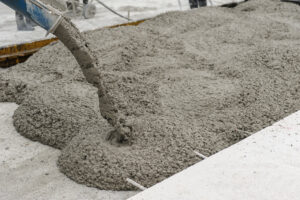How Does Wall Art Affect Your Room’s Overall Vibe?
Wall art does more than just fill an empty wall. It shapes how a room feels the moment someone steps in. Whether it’s bold colors, peaceful scenery, or simple mandala wall art, the pieces hanging on your walls play a major role in setting the atmosphere. It’s often one of the first things people notice, and it speaks volumes about your personality and taste.
First Impressions Start on the Walls
When someone enters a room, the walls silently speak. A blank wall might feel cold or uninviting. On the other hand, artwork with warmth and life can make a space feel open and welcoming. This doesn’t mean you need an expensive painting. A framed photo or a quirky canvas print can do wonders. The point is, the art sets the mood. It tells guests whether the room is a place to relax, think, laugh, or just be.
Color and Mood: A Powerful Connection
Colors have a deep effect on how people feel in a room. Bright reds and oranges bring energy and excitement. Blues and greens feel calm and quiet. If your wall art is full of soft pastels or nature tones, the room instantly feels peaceful. On the flip side, art with neon colors or bold strokes might give the space a louder, more expressive feel. The balance between your wall color and your art also matters. Art shouldn’t fight with the wall—it should blend into the room’s rhythm.
Personal Expression Through Art
Your wall art reflects your story. It could be a poster of your favorite band, a canvas of your hometown skyline, or abstract shapes that speak to you. Art is deeply personal, and when it’s in your home, it becomes part of your identity. It lets others see a side of you without a single word. People often remember the art they see in someone’s home—it sticks in their minds because it reveals personality in a quiet, powerful way.
Small Changes, Big Feelings
Switching out wall art is one of the easiest ways to shift a room’s feel. Want your space to feel more peaceful? Try calm-toned prints. Need more life in a dull space? Go with something bold and textured. You don’t need to repaint or buy new furniture. Just changing the art on your walls gives your room a new energy. Even swapping frames from black to wood or white can affect how everything feels.
Size and Placement: It’s All About Balance
Where and how you hang your art affects how the room feels. A large piece above a couch can anchor the room and make it feel complete. Too many small pieces scattered randomly can make a wall feel busy or chaotic. On the other hand, a small, centered piece on a blank wall can feel peaceful and intentional. Always think about eye level, spacing, and the surrounding furniture when hanging art. Art shouldn’t feel like it’s floating or crammed in—it should belong.
Texture Brings Depth
Not all wall art is flat. Some pieces use materials like fabric, wood, or metal. These textures add depth to your walls and make your space feel richer. A woven wall hanging can soften a space. A metal sculpture might add a modern edge. The texture doesn’t have to be loud—it just needs to complement the room’s feel. These extra layers pull the room together in a quiet but strong way.
Themes Can Tie the Room Together
A theme doesn’t mean every piece has to match. It means they talk to each other. For instance, black and white photography mixed with simple line drawings can create a calm, modern mood. Or maybe your art all centers around nature, travel, or geometry. When the pieces share something in common, they give the room a sense of unity without being too rigid. It feels natural, like the pieces belong together.
Wall Art as a Conversation Starter
Some art stops people in their tracks. Whether it’s funny, bold, thought-provoking, or strange—it sparks conversation. That’s the power of a great piece. It invites people to ask questions, share opinions, and connect. This is especially true in living rooms or dining spaces, where people gather. A bold or unusual piece gives the room character. It makes the space feel alive and thought-out, even if nothing else in the room is flashy.
Art Can Comfort and Inspire
Wall art isn’t just about appearance. It’s about how it makes you feel. A painting of a peaceful beach might help you wind down after a long day. A quote in stylish lettering might keep you motivated. Photos of people you care about can bring comfort when the room feels too quiet. When your walls show things that matter to you, your room becomes a space that supports your state of mind.
Keep It Real and Keep It You
You don’t need to follow trends or copy what you see online. Your space should feel like you. Wall art is your chance to bring a piece of your world into your home. It could be hand-drawn sketches, street art prints, or thrift shop finds. What matters is that it means something to you and fits your space. Rooms feel better when they feel lived in, and wall art is a big part of that.
Final Thought
The vibe of a room doesn’t come from just furniture or lighting. It comes from the small things—especially the art on the walls. Wall art gives a room heart, voice, and meaning. It ties everything together and turns a space into a place. Whether it’s calming, playful, bold, or sentimental, what you put on your walls matters more than most people think. Let your walls reflect who you are, and the room will follow.













